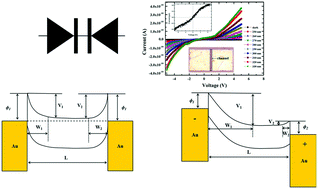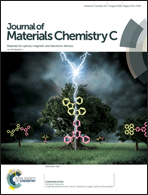Back-to-back symmetric Schottky type UVA photodetector based on ternary alloy BeZnO
Abstract
In this work, a back-to-back symmetric Schottky type ultraviolet (UV) photodetector based on ternary alloy BeZnO was reported. High quality ternary alloy BeZnO was grown on a c-sapphire substrate via rf-plasma assisted molecular beam epitaxy (rf-MBE). The bandgap of BeZnO film was confirmed to be ∼3.54 eV and two-mode phonon vibration behavior was found in the resonant Raman spectrum. According to the modified random element isodisplacement (MREI) model, the two-mode behavior is due to the smaller effective mass of the substituting element Be in comparison with that of ZnO. Subsequently, we fabricated a symmetric Schottky type photodetector through using the high work function metal Au as the electrodes. Due to the incorporation of Be, the dark current of the device under 10 V is as low as ∼1 pA. The device showed a noticeable UV response with a response peak at 325 nm and a cut-off edge at 365 nm. At 5 V, the peak responsivity was as high as 10 mA W−1, which is the best result in BeZnO based photodetectors. Compared with ZnO-based photoconductive type photodetectors, the Schottky type device has a much faster response speed with a rise time of 1.48 ms and a decay time of 4 ms. Our findings provide a promising approach to realize a high performance UV photodetector based on novel ternary alloy BeZnO.



 Please wait while we load your content...
Please wait while we load your content...